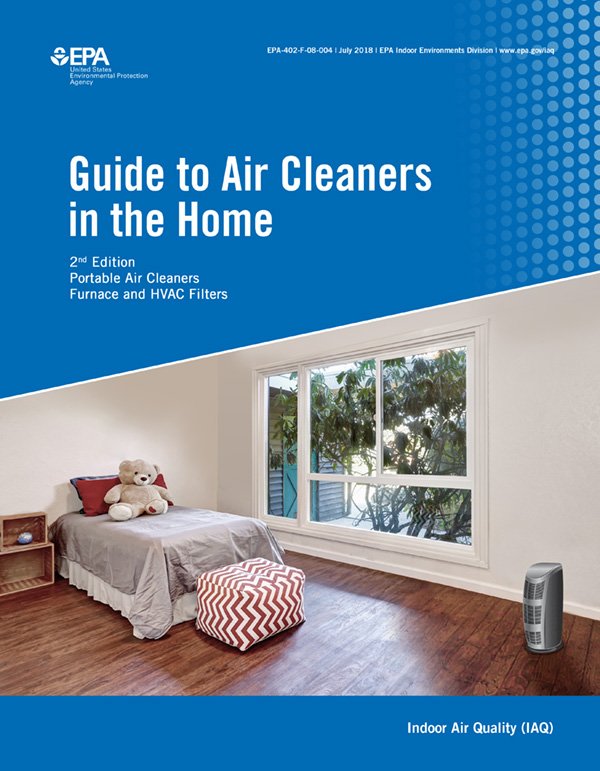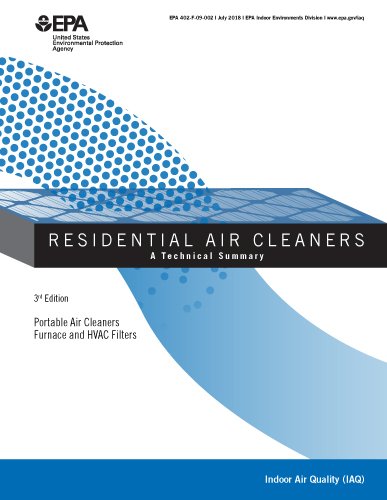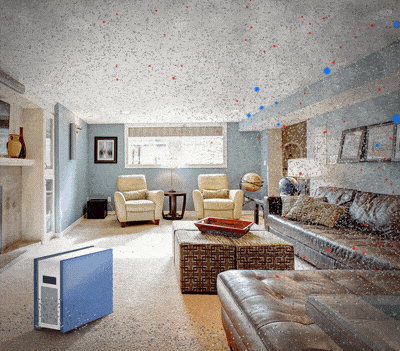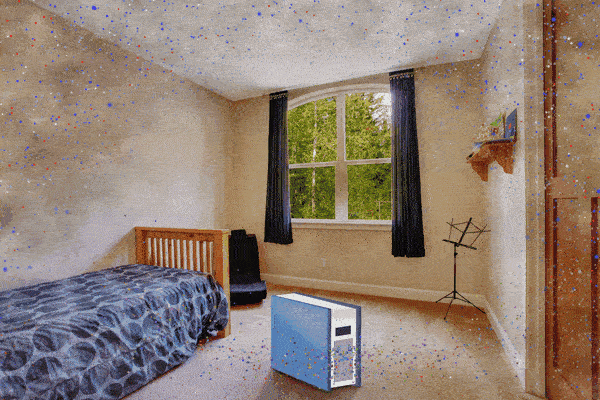Air Cleaners and Air Filters in the Home
Información disponible en español
On this page:
- Guide to Air Cleaners in the Home
- Residential Air Cleaners: A Technical Summary
- For Kids: Meet the Air Cleaning Allies!
The most effective ways to improve your indoor air are to reduce or remove the sources of pollutants and to ventilate with clean outdoor air. In addition, research shows that filtration can be an effective supplement to source control and ventilation. Using a portable air cleaner and/or upgrading the air filter in your furnace or central heating, ventilation, and air-conditioning (HVAC) system can help to improve indoor air quality. Portable air cleaners, also known as air purifiers or air sanitizers, are designed to filter the air in a single room or area. Central furnace or HVAC filters are designed to filter air throughout a home. Portable air cleaners and HVAC filters can reduce indoor air pollution; however, they cannot remove all pollutants from the air.
The following publications provide information on portable air cleaners and on HVAC and furnace filters commonly used in homes.
Guide to Air Cleaners in the Home
2nd edition, August 2018
Portable Air Cleaners, Furnace and HVAC Filters
Available in HTML format and Guide to Air Cleaners in the Home PDF format (pdf) (2.9 MB).

The short consumer guide covers portable air cleaners and furnace or HVAC filters used in a home. It includes tips for selecting a portable air cleaner, furnace filter, or HVAC filter.
Click on the images below to see an animation of a portable air cleaner removing particles from the air in a home.
For an overview of the Guide to Air Cleaners in the Home:
View the technical assistance webinar Dealing with Dust in the Wind: EPA Guidance for Consumers About Air Cleaners presented by Terry Brennan (Camroden Associates) and Lew Harriman (Mason-Grant Consulting) on the EPA YouTube channel.
Residential Air Cleaners: A Technical Summary
3rd edition, August 2018
Portable Air Cleaners, Furnace and HVAC Filters
Read Residential Air Cleaners: A Technical Summary (pdf) (6.9 MB).

The longer technical guide focuses on air cleaners for residential use; it does not address air cleaners used in large or commercial structures such as office buildings, schools, large apartment buildings, or public buildings. In addition to providing general information about the types of pollutants affected by air cleaners, this document discusses the types of air-cleaning devices and technologies available, metrics that can be used to compare air-cleaning devices, the effectiveness of air-cleaning devices in removing indoor air pollutants, and information from intervention studies on the effects that air cleaners can have on health and on health markers.
For an overview of Residential Air Cleaners: A Technical Summary:
View the technical assistance webinar The Technical Details: EPA Guidance for Residential Air Cleaners presented by Terry Brennan (Camroden Associates) and Lew Harriman (Mason-Grant Consulting) on the EPA YouTube channel.
Meet the Air Cleaning Allies!

Follow along as the Air Cleaning Allies superheroes help a family learn about indoor particle pollution, filtration and air cleaning.


